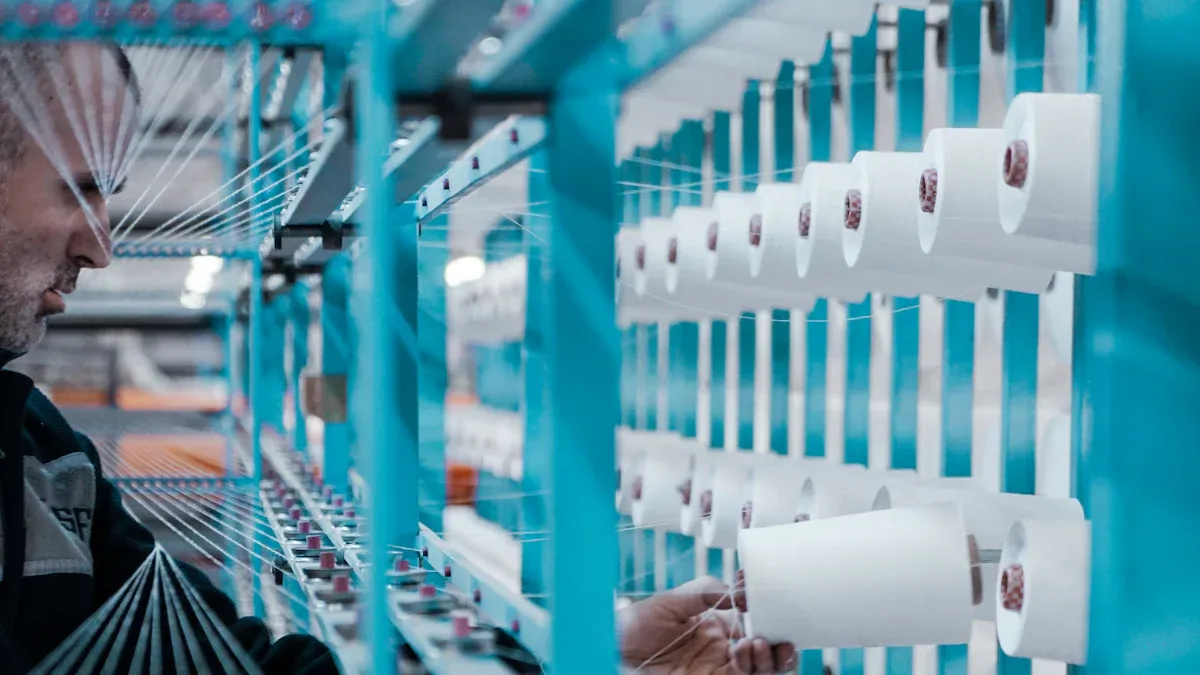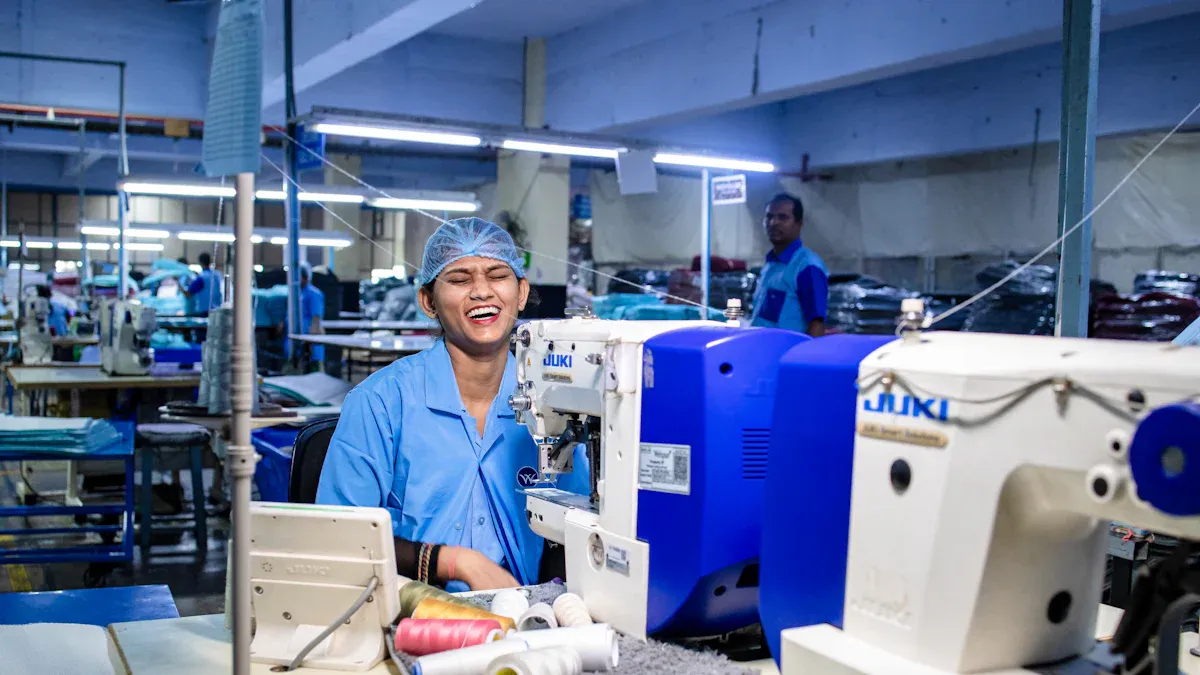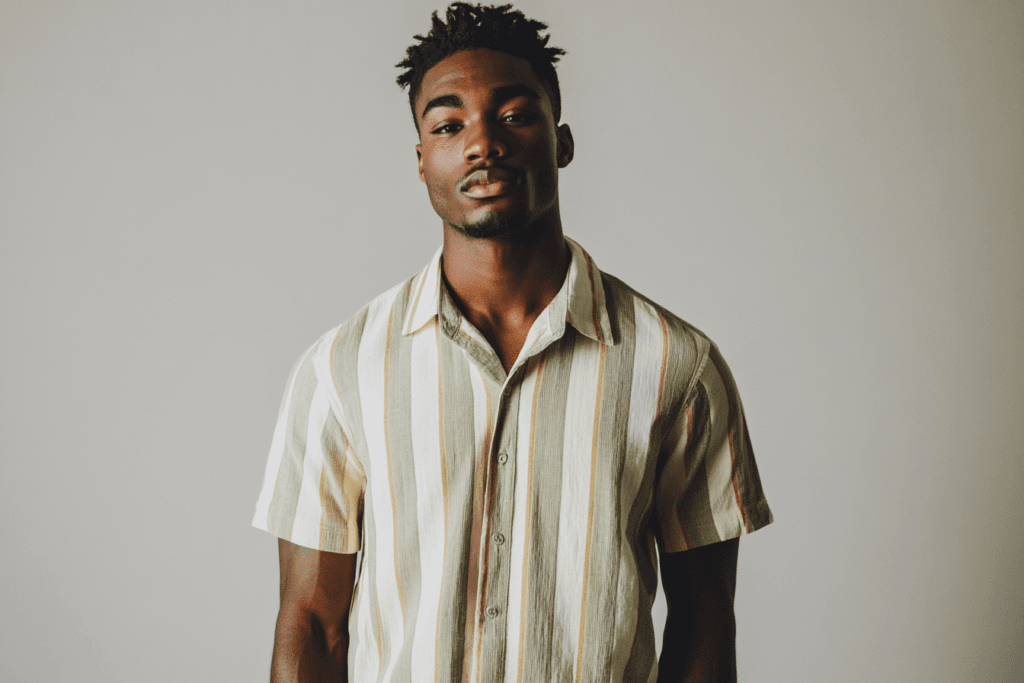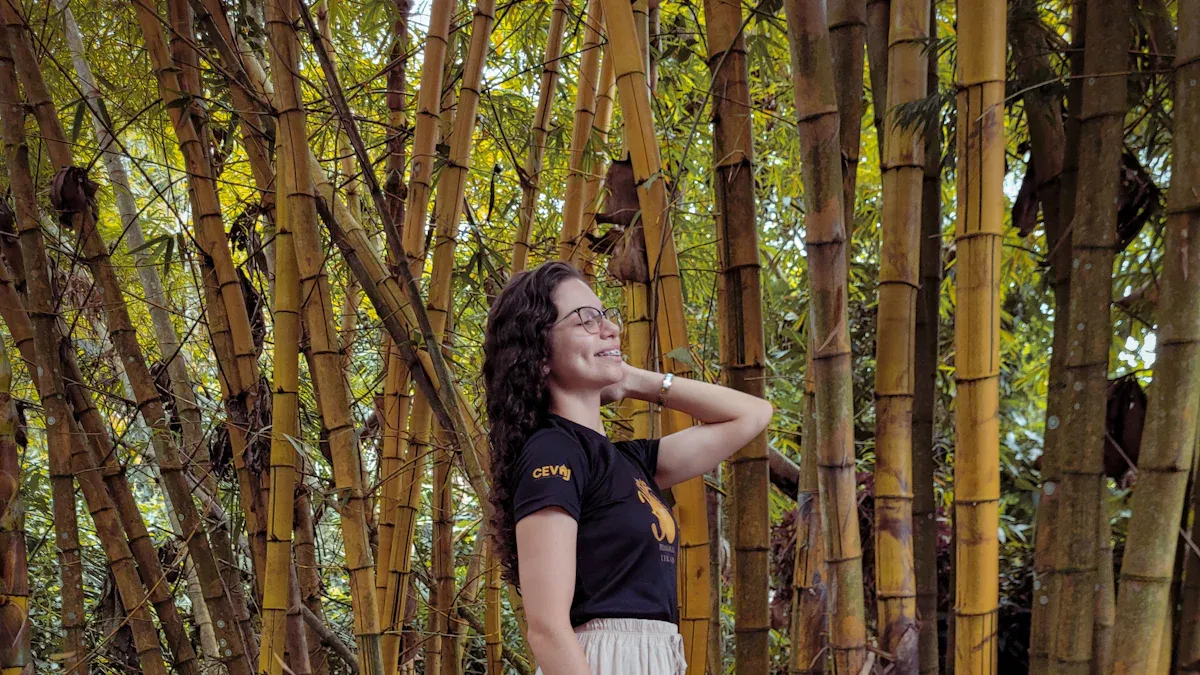
Bamboo shirt fabrics have become a favorite among eco-conscious buyers. Their sustainable nature and minimal environmental impact make them a standout choice in today’s market.
For instance, bamboo requires far less water than cotton and grows rapidly without harmful chemicals. This makes it an excellent option for reducing your carbon footprint. Additionally, the bamboo clothing market is projected to grow from $2.5 billion in 2023 to $5.2 billion by 2030, reflecting its increasing demand.
Choosing high-quality bamboo fabrics ensures you enjoy long-lasting comfort while supporting ethical and sustainable practices.
Key Takeaways
- Bamboo shirt fabrics are good for the environment. They use less water and no harmful chemicals, making them a smart choice for eco-friendly shoppers.
- Check for labels like Oeko-Tex® and GOTS when buying bamboo fabrics. These ensure the fabric is safe and high-quality.
- Bamboo fabrics are soft and strong. They are also hypoallergenic and keep moisture away, which helps people with sensitive skin.
- The bamboo clothing market is growing fast. It might reach $5.2 billion by 2030 because more people want eco-friendly clothes.
- Take care of bamboo fabrics by washing them gently. This helps them last longer and stay in good condition.
What Should You Know About Bamboo Shirt Fabrics?

What Are Bamboo Shirt Fabrics
Bamboo shirt fabrics are made from fibers derived from the fast-growing bamboo plant. This material is celebrated for its eco-friendly properties, as bamboo requires minimal water and grows without pesticides or fertilizers. Its cultivation also helps prevent soil erosion, promoting healthier ecosystems. Bamboo fabric stands out for its softness, breathability, and moisture-wicking capabilities, making it ideal for shirts. You’ll find it hypoallergenic and gentle on sensitive skin, offering comfort and durability even after multiple washes.
Types of Bamboo Fabrics
Bamboo fabrics come in various forms, each suited to different applications:
- Bamboo Fiber: Used in apparel, processed mechanically to retain natural qualities.
- Bamboo Yarn: Common in home textiles, created through chemical processing.
- Bamboo Fabric: Found in industrial textiles, often produced using hybrid methods.
- Bamboo Clothing: Applied in medical textiles for its antibacterial properties.
- Bamboo Home Textiles: Includes items like towels and bedding, valued for their absorbency.
| Product Type | Application Type | Manufacturing Process Type | End-User Type |
|---|---|---|---|
| Bamboo Fiber | Apparel | Mechanical | Retail |
| Bamboo Yarn | Home Textiles | Chemical | Commercial |
| Bamboo Fabric | Industrial Textiles | Hybrid | Industrial |
| Bamboo Clothing | Medical Textiles | N/A | N/A |
| Bamboo Home Textiles | N/A | N/A | N/A |
How Bamboo Shirt Fabrics Are Made
The production of bamboo shirt fabrics involves several steps:
- Bamboo plants are harvested and processed to extract fibers.
- Fibers undergo mechanical or chemical processing to create fabric.
- Mechanical methods preserve bamboo’s natural qualities, while chemical processes use solvents to dissolve fibers.
Innovations like closed-loop systems are reducing the environmental impact of chemical processing by recycling solvents. Advances in textile technology are also improving the quality and affordability of bamboo fabrics, making them more accessible to eco-conscious buyers.
What Are the Current Market Trends for Bamboo Shirt Fabrics?

Growing Demand for Sustainable Clothing
The demand for sustainable clothing has surged in recent years, with bamboo shirt fabrics becoming a popular choice among eco-conscious consumers. Younger generations, particularly Millennials and Gen Z, are driving this shift by prioritizing environmentally friendly materials. Bamboo, as a rapidly renewable resource, aligns perfectly with this trend. It grows quickly, requires minimal water, and thrives without pesticides, making it a sustainable alternative to traditional fabrics.
The bamboo clothing market reflects this growing interest. Valued at $2.5 billion in 2023, it is projected to reach $5.2 billion by 2030, growing at a compound annual growth rate (CAGR) of 10.7%. This growth is fueled by increased environmental awareness and advancements in bamboo fiber processing technologies. Consumers are also drawn to bamboo’s unique properties, such as its antibacterial and hypoallergenic features, which make it ideal for sensitive skin.
| Market Growth | Description |
|---|---|
| Demand for Bamboo T-Shirts | Rising as consumers prefer sustainable fashion, particularly in North America and Europe. |
Innovations in Bamboo Fabric Technology
Technological advancements are transforming the bamboo textile industry. Manufacturers are adopting cleaner and more ethical production methods to reduce environmental impact. Closed-loop systems, for example, recycle solvents and minimize water consumption during the fabric production process. These systems not only lower emissions but also make bamboo shirt fabrics more sustainable.
Research into bamboo’s unique properties has led to exciting innovations. For instance, antimicrobial clothing and breathable activewear are gaining popularity. Designers are also exploring 3D printing with bamboo fibers, enabling rapid prototyping and the creation of innovative garment designs. These advancements make bamboo fabrics more versatile and accessible to a wider audience.
Popular Applications in Fashion
Bamboo shirt fabrics are making waves in the fashion industry. Tops, including shirts and T-shirts, represent the largest segment in the bamboo clothing market. Consumers value these garments for their comfort, breathability, and eco-friendly appeal. Bamboo’s moisture-wicking and antibacterial properties further enhance its suitability for everyday wear.
| Product Type | Description |
|---|---|
| Tops (Shirts, T-Shirts) | Represent the largest segment in the bamboo clothing market due to demand for comfortable, breathable, and eco-friendly fabrics. |
Fashion brands are increasingly incorporating bamboo into their collections, from casual wear to activewear. This trend reflects a broader movement toward sustainable fashion, where both style and environmental responsibility go hand in hand.
What Are the Selection Standards for Bamboo Shirt Fabrics?

Certifications to Ensure Quality
When selecting bamboo shirt fabrics, certifications play a crucial role in ensuring quality and sustainability. Look for certifications like Oeko-Tex® Standard 100, which tests textiles for harmful substances, guaranteeing safety for you and the environment. Another important certification is the Global Organic Textile Standard (GOTS). It requires at least 70% organic fibers and enforces strict environmental and social criteria.
Here’s a quick overview of key certifications:
| Certification Name | Description |
|---|---|
| Oeko-Tex® Standard 100 | Tests textiles for harmful substances, ensuring safety for consumers. |
| STeP by Oeko-Tex® | Evaluates sustainable practices in textile production. |
| Made in Green by Oeko-Tex® | Combines safety and responsible manufacturing standards. |
| Global Organic Textile Standard (GOTS) | Focuses on organic fibers and strict environmental standards. |
These certifications help you identify fabrics that meet high-quality and eco-friendly standards. Always check for these labels when shopping for bamboo shirt fabrics.
Evaluating Fabric Properties
Understanding fabric properties ensures you choose the best bamboo shirt fabrics for your needs. Start by assessing the softness and breathability of the material. Bamboo fabrics are known for their silky texture and ability to wick moisture, keeping you comfortable in various climates.
Durability is another key factor. High-quality bamboo fabrics maintain their shape and softness even after multiple washes. Check for hypoallergenic properties if you have sensitive skin. Antibacterial features are also a bonus, as they help reduce odors and keep your shirts fresh longer.
Tip: Stretch the fabric gently to test its elasticity and inspect the weave for uniformity. These simple checks can reveal a lot about the fabric’s quality.
Ethical and Sustainable Production Practices
Ethical and sustainable production practices are essential when choosing bamboo shirt fabrics. Some manufacturers use harmful chemicals like carbon disulfide during production, which can harm workers and the environment. To avoid this, opt for products made with cleaner alternatives like Tencel® or EcoVero. These materials use eco-friendly processes that minimize environmental impact.
Here are some best practices to look for:
- Choose brands that disclose their supply chain and chemical disposal methods.
- Support manufacturers adopting closed-loop systems to recycle solvents and reduce waste.
- Avoid products from companies engaging in deforestation or monoculture farming.
While bamboo is marketed as sustainable, not all products meet this claim. By demanding transparency and supporting ethical brands, you can make a positive impact on the environment.
What Are the Advantages of Bamboo Shirt Fabrics?

Environmental Sustainability
Bamboo shirt fabrics offer significant environmental advantages. Bamboo grows rapidly and thrives in arid regions without artificial irrigation. Its cultivation requires minimal water and avoids pesticides or fertilizers, reducing its ecological footprint. Bamboo’s root systems also prevent soil erosion, promoting healthier ecosystems.
While bamboo as a raw material is sustainable, the process of turning it into fabric can be chemically intensive. Sodium hydroxide and carbon disulfide are often used, which can lead to air and water pollution. Despite these challenges, bamboo absorbs carbon dioxide at a higher rate than many trees, making it an eco-friendly choice. By supporting brands that use cleaner production methods, you can enjoy the benefits of bamboo shirt fabrics while minimizing environmental harm.
Comfort and Skin Benefits
Bamboo shirt fabrics excel in comfort and skin care. The material is hypoallergenic, making it ideal for sensitive skin. Its natural UV protection reduces the risk of sun damage, while its breathability keeps your skin dry and cool. Bamboo absorbs 60% more moisture than cotton, allowing sweat to evaporate faster and maintaining a comfortable body temperature.
These fabrics regulate body temperature effectively, keeping you warm in winter and cool in summer. Whether you’re wearing bamboo shirts for casual outings or activewear, you’ll appreciate their silky texture and ability to wick moisture away from your skin.
Antibacterial and Moisture-Wicking Features
Bamboo shirt fabrics stand out for their antibacterial and moisture-wicking properties. Research shows that bamboo retains 70% of its antibacterial effectiveness even after 50 washes. It eliminates 99.8% of bacteria within 24 hours, helping reduce odors and keeping your shirts fresh longer.
The moisture-wicking ability of bamboo fabrics enhances comfort during physical activities. Bamboo absorbs 60% more moisture than cotton and holds three times its weight in water. This feature allows sweat to evaporate quickly, keeping your skin dry and your body temperature cooler by 2-3°C. These qualities make bamboo shirt fabrics a preferred choice for athletes, travelers, and outdoor enthusiasts.
What is the Challenge of Bamboo Shirt Fabrics?

Cost and Affordability
Bamboo shirt fabrics often come with a higher price tag compared to conventional materials. The production process, which includes harvesting, processing, and manufacturing, is resource-intensive. This leads to increased costs for raw materials and labor. Additionally, the energy required to convert bamboo into fabric further raises production expenses.
| Challenge | Description |
|---|---|
| High Production Costs | The resource-intensive process of converting bamboo into fabric results in higher costs, making it less appealing to price-sensitive consumers. |
| Lack of Standardization | Inconsistencies in product quality and performance arise from the absence of standardization, affecting consumer confidence and brand reputation. |
Market analyses reveal that these high costs hinder the growth of bamboo clothing. Price-sensitive buyers often opt for cheaper alternatives, limiting the market reach of bamboo fabrics. For instance, reports show that the bamboo clothing market, despite its projected growth, struggles to compete with more affordable options like cotton or polyester.
Durability and Maintenance
Bamboo fabrics are known for their softness and durability, but proper care is essential to maintain their quality. The fibers resist pilling and retain their shape well, even after regular washing. However, pure bamboo fabrics require gentle handling. Harsh detergents or high-temperature washing can weaken the fibers over time.
- Bamboo fabric resists pilling and stays soft.
- Cotton-bamboo blends offer better abrasion resistance than pure bamboo.
- Gentle washing extends the lifespan of bamboo garments.
Research shows that bamboo products can last 9 to 12 years with proper care. They also retain antibacterial properties after multiple washes, reducing the need for frequent replacements. However, improper maintenance can shorten their lifespan, making them less cost-effective for some consumers.
Misleading Marketing Claims
Some marketing claims about bamboo fabrics can be misleading. While bamboo is often advertised as naturally antimicrobial, thermal-regulating, and hypoallergenic, these features are not unique to bamboo. They are characteristics of rayon, the material produced from bamboo or other sources like wood.
| Claim | Fact |
|---|---|
| Bamboo apparel is naturally antimicrobial | Rayon, regardless of input, doesn’t mildew as easily as other fabrics. |
| Bamboo is hypoallergenic, breathable, and absorbent | These are general properties of rayon, not exclusive to bamboo. |
These claims can confuse buyers, leading them to believe bamboo fabrics offer unique benefits. To make informed choices, you should focus on certifications and product transparency rather than relying solely on marketing messages.
Conclusion
Bamboo shirt fabrics are transforming the fashion industry with their eco-friendly appeal and exceptional qualities. The market trends highlight a growing demand for sustainable clothing, driven by consumers like you who value environmental responsibility. Certifications such as Oeko-Tex® and GOTS ensure you select high-quality fabrics that meet ethical standards.
Investing in bamboo fabrics offers long-term benefits. The material’s softness rivals silk, making it perfect for sensitive skin. Its durability ensures your garments maintain their quality over time. Additionally, bamboo grows rapidly, uses minimal water, and regenerates naturally, making it a truly sustainable choice.
- Key advantages of bamboo fabrics:
- Rapid growth and low water usage support sustainability.
- Biodegradability aligns with eco-conscious values.
- Comfort, durability, and hypoallergenic properties enhance their appeal.
By choosing bamboo shirt fabrics, you contribute to a greener future while enjoying superior comfort and lasting value.
FAQ
What makes bamboo shirt fabrics eco-friendly?
Bamboo grows quickly without pesticides or fertilizers. It uses less water than cotton and regenerates naturally after harvesting. These qualities make it a sustainable choice for clothing.
What certifications should you look for when buying bamboo fabrics?
Look for certifications like Oeko-Tex® Standard 100 and GOTS. These ensure the fabric is free from harmful substances and meets strict environmental and ethical standards.
What are the key benefits of bamboo shirt fabrics?
Bamboo fabrics are soft, breathable, and moisture-wicking. They are hypoallergenic, making them ideal for sensitive skin. Their antibacterial properties also help reduce odors.
What is the difference between bamboo and cotton fabrics?
Bamboo fabrics are softer, more breathable, and absorb more moisture than cotton. They are also more sustainable due to bamboo’s rapid growth and lower water usage.
What care tips should you follow for bamboo shirts?
Wash bamboo shirts in cold water with mild detergent. Avoid high heat when drying or ironing. Gentle care helps maintain their softness and durability.
